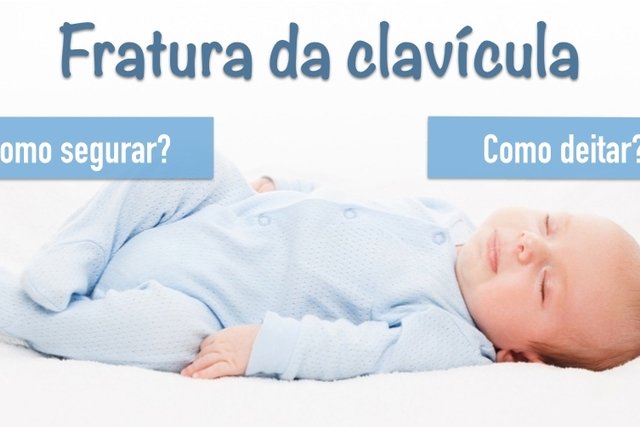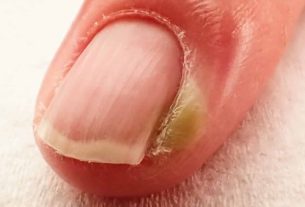Treatment for a fractured clavicle in babies is usually carried out simply by immobilizing the affected arm. However, in most cases it is not necessary to use an immobilizing sling, as in adults, and it is only advisable to attach the sleeve on the affected side to the baby’s clothes with a diaper pin, for example, thus avoiding sudden movements with the arm.
A fractured clavicle in a baby happens very often during a complicated natural birth, but it can also happen when the baby is older due to falls or when it is held incorrectly, for example.
Generally, a fractured clavicle heals very quickly and, therefore, can be completely healed in just 2 to 3 weeks, without the baby experiencing any type of complications. However, in the rarest cases, some sequelae may arise, such as paralysis of the arm or delay in the development of the limb.

How to hold the baby

How to put your baby to sleep
How to avoid the consequences of a clavicle fracture
The consequences of a clavicle fracture are rare and normally only occur when the clavicle breaks and affects the nerves in the arm that are close to the bone, which can result in paralysis of the arm, loss of sensation, delay in the development of the limb or deformation of the arm and hand, for example.
However, these after-effects are not always permanent and may only last while the clavicle heals and the nerves heal. Furthermore, there are some forms of treatment to avoid permanent sequelae, which include:
- Physiotherapy: It is carried out by a physiotherapist and uses exercises and massages to allow the development of muscles and arm range, improving movement. Exercises can be learned by parents so they can complete physical therapy at home, increasing results;
- Medicines: the doctor may prescribe a muscle relaxant to reduce the pressure of the muscles on the nerves, reducing possible symptoms such as pain or spasms;
- Surgery: surgery is used when physiotherapy does not show positive results after 3 months and is performed by transferring a healthy nerve from another muscle in the body to the affected area.
Generally, improvements in sequelae appear in the first 6 months of treatment, after which they are more difficult to achieve. However, forms of treatment can be maintained for several years to achieve small improvements in the child’s quality of life.
How to care for a baby with a clavicle fracture at home
Some important precautions to keep the baby comfortable during recovery and prevent the injury from worsening are:
- Hold the baby with your arms behind your backavoiding placing your hands under the baby’s arms;
- Lay the baby face up for sleeping;
- Wear looser clothing with zippers to make dressing easier;
- Dress the affected arm first and undress the unaffected arm first;
Another very important precaution is to avoid forcing movements with the affected arm after removing the immobilization, letting the baby move his arm only as much as he can.
When to go to the pediatrician
Recovery from a clavicle fracture generally occurs without any problems, however, it is recommended to go to the pediatrician when the following occurs:
- Excessive irritation due to pain that does not improve;
- Fever above 38º C;
- Difficulty breathing.
In addition, the pediatrician can schedule a review appointment after 1 week to take an X-ray and assess the degree of recovery of the bone, which may increase or decrease the time that the arm needs to be immobilized.

Sign up for our newsletter and stay up to date with exclusive news
that can transform your routine!
Warning: Undefined array key "title" in /home/storelat/public_html/wp-content/plugins/link-whisper-premium/templates/frontend/related-posts.php on line 12
Warning: Undefined array key "title_tag" in /home/storelat/public_html/wp-content/plugins/link-whisper-premium/templates/frontend/related-posts.php on line 13




